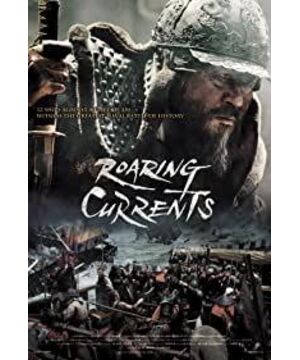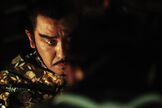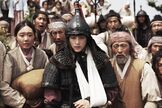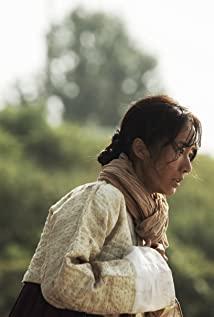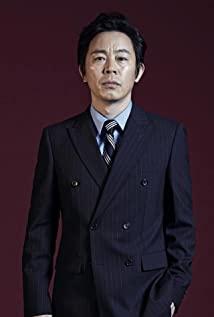This is about Ming Liang in the book Samurai Invasion: Japan's Korean War 1592-1598 by British historian Stephen Turnbull (London, 2002). part of the battle.
Original title: The Miracle at Myǒngyang
Shortly after the successful capture of Namwon [Press: Battle of Namwon, a siege battle that took place in Namwon Castle, Jeolla Province from August 13th to 16th in the old calendar of 1597, the Japanese army besieged Yang Yuan and Joseon, the deputy commander of the Ming army. The city of Namwon, which was guarded by Li Funan, a military junta of Jeolla Province, fell due to the disparity in strength. Li Funan was killed in battle, and Yang Yuan was executed for abandoning the formation. ], the Japanese navy units quickly moved into Hedong, they intend to firmly control the waterway of the Yellow Sea to attack Wangjing from the waterway. According to the plan, the Japanese Left Army will advance by boat through the Han River, attacking the Korean flank and putting it into a situation of two-sided warfare, and this first step went smoothly as scheduled. The 64,000-strong Left Route Army set off from Jeonju on August 27, and boarded a ferry northward from the national highway at the mouth of the Jinjiang River, the natural boundary between Jeolla and Chungcheong. At the same time, the Japanese navy units rushed westward to the west coast of Jeolla-do, which they had never crossed before. On August 28, they learned from the updated information that the commander of the Navy, Yi Sun-sin, had returned, and Lee had taken over the 12 ships that Pei Chong had previously secured. Korean naval officers and men were terrified by the arrival of the Japanese vanguard, but Lee reassured them and crushed the raiders. The attack, however, still forced Lee to evacuate Buzhongxi to a safer location. He chose Bibojin on Jindo, which is located in the southwest corner of the Korean territory and is separated from the mainland by a long and narrow strait called Myongyang. Mingliang, as the name implies, is "the waterway of chirping", because the waves here are turbulent and the flow direction is changeable. The Japanese navy continued to advance along the coast, and on September 6 its vanguard arrived at Lampo. Eight days later, they were attacked by Li's troops and retreated. The Japanese returned that night and attempted another attack, but were repelled. It was at this point that Lee began to wonder if he could beat the Japanese with his bizarre tide. The current passing through this strait is actually the fastest in the waters of North Korea, with a maximum value of 9.5 to 11. 5 verses. In addition, he also learned that the water flows from north to west, and in three hours, it will turn back in the opposite direction. This phenomenon is the only advantage for Lee, because the Japanese navy consists of 133 ships, and he has only 12 surviving ships from Chicheonyang [Press: Battle of Chicheonyang, known in Japan as the "Second Battle of Geoje Island", It happened in the early morning of the Mid-Yuan Dynasty in 1597, that is, at the beginning of the movie, the Korean navy was severely damaged by the Japanese navies Todo Gaohu, Kato Yoshiaki, and Shimazu Yoshihirobe, which led to the original Namsando navy commander Yuanjun and Jeolla Youdo navy festival. A battle in which high-ranking generals such as the imperial envoy Li Yiqi were killed. ]. This famous battle in history, known by the Koreans as "Ming Liang Victory", started in the early morning of September 16 (October 26, 1597). As Li had expected, the 133-ship Japanese navy was heading straight for Yu Lanpu, while Li lined up in the open waters at the northern end of the strait at the same time. When the Japanese entered the Mingliang Strait, Li personally led the ships to meet them. Naturally, his small squadron was soon surrounded. However, Li relied on his solid naval tactics to keep the Japanese fleet from approaching, and was attacked by artillery. Add rocket bombardment. As a result, only one Korean boat was docked, as in Lee's diary: "The thieves are like black ants climbing the Anwei boat" [Press: Anwei, the governor of Jeju, appearing in the movie], but with "the lance, Spears, stone anchors, etc. hit, and they retreat."
During the fierce battle, a Japanese man on the ship of the general under Li's command was surprised to see a man in the sea of floating corpses wearing Jinhaori with embroidered brocade. He was a high-ranking military general. They dragged the body onto the deck. "The Ministry of Civil Affairs ordered the thieves to cut off the corpses, and the thieves were discouraged," Li Rushi remembered. And this high-class deceased, the textual research revealed that it was Kajima Tonghao, and his brother was Kajima Tongzhi who was killed in Tangpu in 1592. While the battle was still in progress, the current turned and dragged the Japanese fleet towards the exit of the strait. The North Korean navy still pursued them, destroying several times their own enemy ships. In Diary of Chaos, Li claims that 31 Japanese ships were wiped out before they could withdraw, but the actual number may be higher. And this naval victory took place only 9 days after the stalemate "Battle of Jishan" [Press: The Battle of Jishan, on September 7th, the Ming army's deputy cavalry chief was relieved, the guerrilla general held a match, and the guerrilla general Yang Dandan A fierce encounter took place between the department and the pioneers of the Japanese army Kuroda Nagamasa and Maori Hidemoto in Jishan County (in Chungcheong Province) bordering Gyeonggi. The Ming army was outnumbered, and both sides advanced and retreated. In fact, this battle did not greatly break the Japanese army, but because it was the first time the Ming army made gains after losing Gyeongsang, Jeolla, and Chungcheong, and the Japanese offensive temporarily slowed down, the Ming army commander reported to the court a setback A savage victory. ], the mental pressure brought to the Japanese military decision-makers can be imagined. A few days ago, specifically on September 8th, the Japanese army on the left occupied and burned Shuchuan City to protect their stronghold by the Jinjiang River. However, the news from the navy army kept them disappointed, and they returned on September 9. On the 16th day of the month, a military meeting was held in Jingyi, and it was on this day that their fate was locked in the battle of Mingliang under the control of Li. Further north, there are similar considerations. When Kato Kiyomasa returned from Jeonju to join the main Japanese army in Jishan, the news of the defeat of Mingliang reached them, and all the generals realized that it was impossible to attack the king again. Beijing. The Japanese army in Jishan was suddenly in a lonely and deep situation, and had no choice but to withdraw to the well-defended "Wacheng". The Japanese army on the right also began a long-distance retreat from the central area of Korea, almost the same as when the army entered in 1592. Sangju, where they had won a major victory, and now they decided to divide their troops when they revisited the homeland. Mouri Hidewon led the main force down the Nakdong River to Busan. Kiyomasa Kato and the rest of the generals marched eastward to the "Wa Castle" of Nishishengpu along the coast, looting and burning them all along the way. Passing through Gyeongju, which was the capital of the ancient Silla Kingdom and an important source of Japanese Buddhist collections. Gyeongju has witnessed two military events since the Japanese army just landed, but the losses were not very heavy. And this time to retreat, Kato Kiyomasa, who was so embarrassed, sent troops to fight Cities, including the famous Buddhist temple, were caught in flames to vent their anger. Loaded with looted treasures, Kato arrives on the coast of Ulsan, one of the "Miura" (three ports) that opened to Japanese commerce a hundred years ago. Kato immediately realized the strategic potential of this place, so the "jinfu" were ordered to build a "Japanese castle", which became the easternmost point of the Japanese military defense line. While all this was going on, the Left Army was doing a similar thing on the coast of Jeolla-do: taking the defensive strongholds, and extending the link between Wacheng to the west by twice the original size. Shimadzu Yoshihiro and Changzong's Yuan Jin occupied Sacheon. At the same time, President Konishi and Yukita Hide's family went to Shuntian, where additional fortifications have already begun. Shimadzu Tadashi and Nabeshima Katsumo completed the closure of the line between Kangjin and Hainan, although the two were abandoned at the end of last year. This coastal line became the only area of Korean territory still occupied by Japan, and within this line, especially in the newly extended Suncheon, Sacheon and Ulsan, shovels and axes were flying as the invaders Be prepared to survive another long "Han Dong" here.
View more about The Admiral: Roaring Currents reviews


